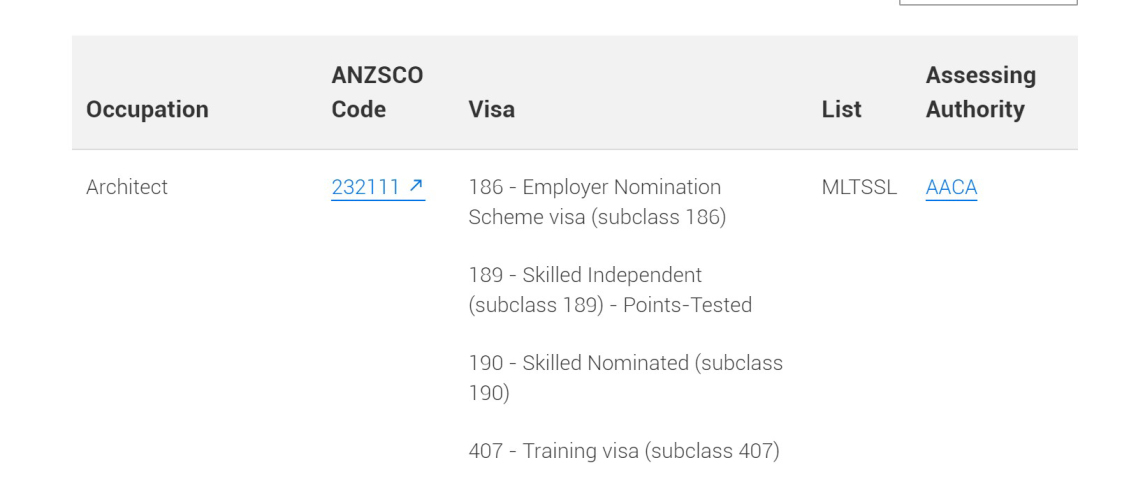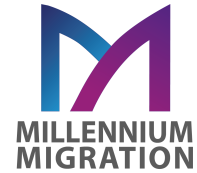
How to Search the Australian Skilled Occupations List
A better quality of life and job opportunities make Australia a popular destination for skilled workers.A better quality of life and job opportunities make Australia a popular destination for skilled workers. To help manage the demand for skilled migration, the Australian government maintains a Skilled Occupation List (SOL), which outlines the occupations that are in high demand in the country. If you are interested in migrating to Australia, it's essential to understand how to search for your occupation on the SOL. In this article, we provide a comprehensive guide to help you search for your desired occupation on the Australian Skilled Occupation List.
- What is the Australian Skilled Occupation List (SOL)?
- Understanding the Results of Your Search on the Australian Skilled Occupation List
How to read ANZSCO Code?
What's the difference between MLTSSL, STSOL, and ROL?
How to read the Assessing Authority? - Conclusion
- Frequently Asked Questions (FAQs) about the Australian Skilled Occupation List
The Skilled Occupation List (SOL) is a list of occupations that are in high demand in Australia. It is used by the Australian government to manage the country's skilled migration program, which allows skilled workers from overseas to migrate to Australia on a permanent or temporary basis. The SOL is reviewed and updated regularly to ensure that it reflects the changing needs of the Australian labor market.
The SOL includes a wide range of occupations across various industries, including healthcare, engineering, information technology, construction, and more. Each occupation on the SOL is assigned a unique six-digit ANZSCO code, which is used to identify the occupation and its required skills and qualifications.
If you are a skilled worker interested in migrating to Australia, your occupation must be on the SOL in order for you to be eligible for a skilled visa. However, it is important to note that simply being on the SOL does not guarantee that you will be granted a visa, as there are a number of other eligibility criteria that you must meet.
Overall, the Skilled Occupation List (SOL) is an important tool for skilled workers interested in migrating to Australia, as it provides a guide to the occupations in high demand in the country and the skills and qualifications required for these occupations.
Searching for an occupation on the Australian Skilled Occupation List (SOL) can be an overwhelming task, but with a little understanding, the process can become much more manageable. Once you have completed your search, the next step is to understand the results and how to interpret them. We will provide a comprehensive guide to help you understand the results of your search on the Australian Skilled Occupation List, including how to read the ANZSCO code, list and Assessing Authority.

How to read the ANZSCO code:
The ANZSCO code is a six-digit code that is used to identify a specific occupation in Australia. It is important to understand the ANZSCO code when searching for an occupation on the SOL, as it is used to categorize occupations based on their skills and qualifications. The ANZSCO code is broken down into the following components:
- First two digits: The first two digits represent the major group of the occupation. For example, the major group for healthcare occupations is 25.
- Third digit: The third digit represents the sub-major group within the major group. For example, the sub-major group for medical practitioners is 253.
- Fourth digit: The fourth digit represents the minor group within the sub-major group. For example, the minor group for general practitioners and resident medical officers is 2531.
- Fifth digit: The fifth digit represents the unit group within the minor group. For example, the unit group for general practitioners is 253111.
- Sixth digit: The sixth digit represents the occupation within the unit group. For example, the occupation for general medical practitioners is 232111.
What's the difference between MLTSSL, STSOL, and ROL?
You must be familiar with the MLTSSL, STSOL, and ROL – the three occupation lists that determine your eligibility for a skilled visa. Here, we will introduce these lists and explain what they mean for your immigration journey.
- MLTSSL: The Medium and Long-term Strategic Skills List
- STSOL: The Short-term Skilled Occupation List
- ROL: The Regional Occupation List
How to read the Assessing Authority:
The Assessing Authority is an organization that is responsible for assessing the skills of a skilled worker who is applying for a visa to work in Australia. The Assessing Authority is specific to each occupation and is listed on the Skilled Occupation List (SOL). When searching for an occupation on the SOL, it is important to pay attention to the Assessing Authority, as it will determine the requirements for your skills assessment.
The Assessing Authority has listed in the "Assessment Authority" column on the SOL, along with the ANZSCO code and the occupation title. You can find more information about the specific requirements for your skills assessment by visiting the website of the Assessing Authority for your occupation.
Once you have found an occupation on the SOL that matches your skills and qualifications, the next step is to ensure that you meet all of the eligibility criteria for the skilled migration program. In addition to having an occupation on the SOL, you will also need to meet the minimum English language requirements, have relevant work experience, and pass a skills assessment by the relevant Assessing Authority.
It is also important to keep in mind that the SOL is regularly updated, so it is a good idea to regularly check the list for any changes that may affect your eligibility for a skilled visa.
Conclusion:
Understanding the results of your search on the Australian Skilled Occupation List is an important step in the skilled migration process. By knowing how to read the ANZSCO code and Assessing Authority, you can identify the occupations that match your skills and qualifications and ensure that you meet all of the eligibility criteria for the skilled migration program. Remember to regularly check the SOL for any changes and updates, and seek advice from a qualified migration agent or lawyer if you have any questions or concerns.

How often is the Skilled Occupation List (SOL) updated?
How do I get a skills assessment?
What are MLTSSL, STSOL, and ROL?

"Millennium Migration is the Premier Immigration Company for All Your Needs"
If you're looking for an immigration company that can help you navigate the complex immigration process, look no further than Millennium Migration. Our team of expert immigration lawyers and consultants are dedicated to making your immigration journey as smooth and stress-free as possible. With a focus on providing exceptional customer service and attention to detail, we ensure that each and every one of our clients receive the support and guidance they need to succeed in their immigration journey.
